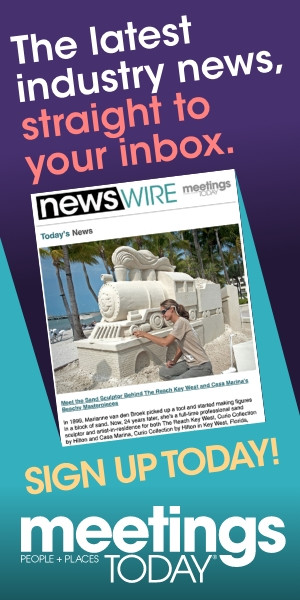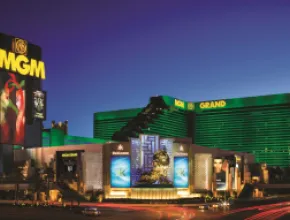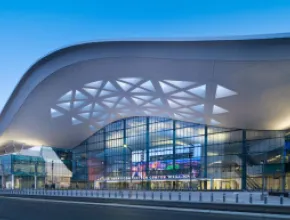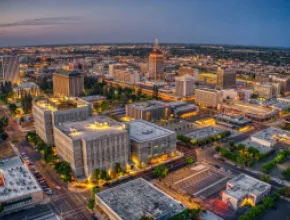It’s hard to believe that empty boxes of space can change so much. But they do. And they should.
In June, the International Association of Conference Centres (IACC) published its 2025 Meeting Room of the Future Barometer, which monitors event trends, technology and venue selection based on survey input from 205 qualified meeting planners. Asked which components these planners expected to increase over the next three years, conclusions included “high-quality internet, room acoustics and lighting, ethical and sustainable operations, and the importance of networking spaces outside of meeting rooms.”

From a high-level perspective, not much has changed: simply put, planners want “good space,” the latest technology, better food and beverage options and fresh-looking furniture and interiors—all at rock-bottom rental prices.
Behind the scenes, however, conference centers struggle like the Wizard of Oz behind his curtain to meet ever-new challenges in future-proofing their spaces. It’s not been easy. Within the past 10 years, since IACC initiated the Meeting Room of the Future, new technology has replaced old; new health habits are dictating how much time should be spent sitting; shorter attention spans have revised conference schedules; and, last but not least, a pandemic threatened to do away with meetings altogether.
“The volatility of recent years has created a recalibrated industry where agility, resilience and innovation aren’t optional—they’re expected,” remarked Mark Cooper, CEO of IACC. “It’s not about waiting for calm skies; it’s about navigating confidently through continuous change. IACC venues are uniquely positioned for this because they’re built for flexibility and constantly evolving with the needs of meeting planners and delegates.”
Purpose-Built for Meetings and Events
Many of the early conference centers were privately funded and built by companies such as American Airlines and IBM to train their sales teams. Some of these centers were later spun off to serve external clients as the internal need for such centers dwindled. Later conference centers were built or modified in urban environments to serve diverse businesses.

“Venues like those within the Convene portfolio,” said Phoenix Porcelli, SVP of sales at Convene, “were purpose-built for meetings and events. There is thoughtful, built-in infrastructure to ensure a seamless program—which includes everything from providing rooms of various sizes to the strategic use of movable walls to offer floor plan customization, the technology and AV needed to run a conference, and onsite catering.”
“It comes down to design and a laser focus on meetings,” Cooper agreed. “IACC venues are designed for distraction-free, productive attendee collaboration. That includes advanced AV, natural daylight, ergonomics, acoustics and more—elements that hotels and convention centers often retrofit or overlook. Our member venues offer an all-inclusive approach where every detail of the delegate experience is considered, from continuous refreshment breaks to seamless connectivity and customizable meeting packages. The result is better meeting outcomes, plain and simple.”
However, distinctions in the events industry often get blurred, and it’s not easy to distinguish between a convention center that resembles a conference center or a resort that resembles a convention center.
IACC tries to mitigate the confusion with a certification that acts as a brand.
“IACC certification signals a venue’s commitment to a specific quality benchmark—it’s not just a logo, it’s a guarantee of capability,” Cooper said. “We position IACC venues as the gold standard for productive conferences and meetings. Through our digital platforms, strategic partnerships and global education initiatives at events such as IMEX and MPI World Education Congress, we demonstrate how IACC venues are designed to deliver higher engagement, sustainability and value. Planners see it as an assurance that the venue understands the complexities of meetings and is equipped to support them at every level.”
Both IACC and Convene cite a superior attendee “experience” model as a reason to meet at conference center venues.
“The ‘flight-to-experience’ is not just about creating something worthwhile for the attendee, it’s an investment in cultivating a more impactful event to justify programming for organizations and key stakeholders,” Porcelli said. She added that Convene in particular makes this happen by having “thoughtfully curated a selection of preferred third-party suppliers that can elevate any event—be it through branding opportunities, photography and videography, florals, mixologists, live musical entertainment and more.
“We have seen a 22% increase in the addition of these services year-over-year,” Porcelli said.
However, data from the 2025 Meeting Room of the Future disputes aspects of this worldview. This year’s survey results noted that “only one-third of planners said a major brand’s reputation can instill confidence and reassurance that the event will be of a high standard; 46% need more than a brand to feel confident.”
In addition, 10% of planners are looking beyond conference centers (and similar event venues) and toward sports stadiums, museums and vineyards. In other words, authentic venues that can set the stage for specific, immersive experiences.
[Related: Riverside EpiCenter: A Meeting Venue on a Mission]
Emerging Technology Considerations
Another surprising takeaway from the IACC report was that fewer planners (68%, compared to 2023’s 80%) feel pressured to incorporate new technology into meetings, save for the internet, which remains a top priority. Part of the reason could be that attendees’ smartphones are now shouldering that tech burden.
As Joe Santo, VP of major accounts with Encore and chair of IACC Americas Chapter, commented in the report: “Networking sessions, mobile apps, social media integrations and polling are top attendee engagement tactics used by planners; therefore, stressing the importance that internet plays in the overall success of an event.”
Meanwhile, 14% of respondents say AI is now “a critical technology,” up from 4% in IACC’s previous survey. A very controversial development (for example, how does AI align with sustainability practices?), AI has yet to be determined good, evil or pixie dust; however, Porcelli confirms that in June [2025] alone Convene had 17 AI-related events across its global portfolio of venues, ranging from large-scale external conferences to internal training sessions. Increased reliance on AI can be expected to drive up demand for internet access volume and quality in the coming years.
[Related: Review Highlights From Last Year's IACC Meeting Room of the Future Report]
The Evolution of Office Space
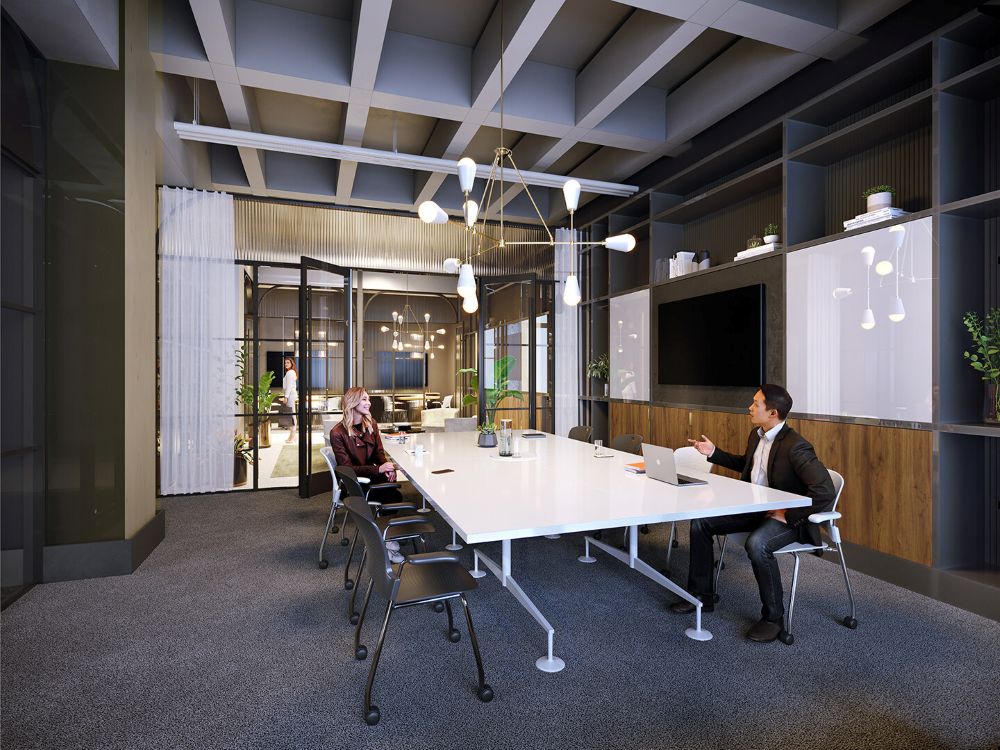
One of the lasting pain points of the pandemic is: As people continue to work from home, what to do about all the office space? Reimagining 4.1 billion square feet of existing office space within the U.S. alone is now a priority for many stakeholders, especially in urban centers where the space is most concentrated.
While there has been much talk about converting office buildings into hotels and multifamily dwellings, many realtors are installing conference center amenities, as these can be easily reconfigured or expanded, based on popularity. Here are some examples:
In the U.K., Convene has drilled into the market by purpose-building conference centers in Class A buildings to serve existing tenants. According to Ryan Simonetti, CEO of Convene, “Within our own Convene portfolio, we’ve seen tenants at 22 Bishopsgate take, on average, 5% less space by outsourcing their meeting and event needs to the in-building Convene amenity.”
In Philadelphia, 2000MKT has opened a 5,000-square-foot tenant-only conference center that can host up to 120 people.
In 2022, New York City’s Seagram Building converted its underground parking garage into a $25 million recreation, fitness and conference space called The Playground + Conference Center. As the building looks to refinance in 2025, The Playground + Conference Center is listed among the amenities.
On Manhattan’s lower West Side, the 860,000-square-foot 345 Hudson Street building is considering a ground-floor conference center as part of its retrofit.
New York-based Vornado Realty Trust has created Worklife Meetings and installed conference spaces at New York City’s PENN1 and Chicago’s THEMART (formerly Merchandise Mart). Vornado’s amenity is a hybrid of public and tenant-only access.
These “pop-up” facilities may threaten stand-alone conference centers by diluting the market and siphoning off potential clients, but they may also fade away as realtors (and cities) find long-term solutions to their empty building problems.


